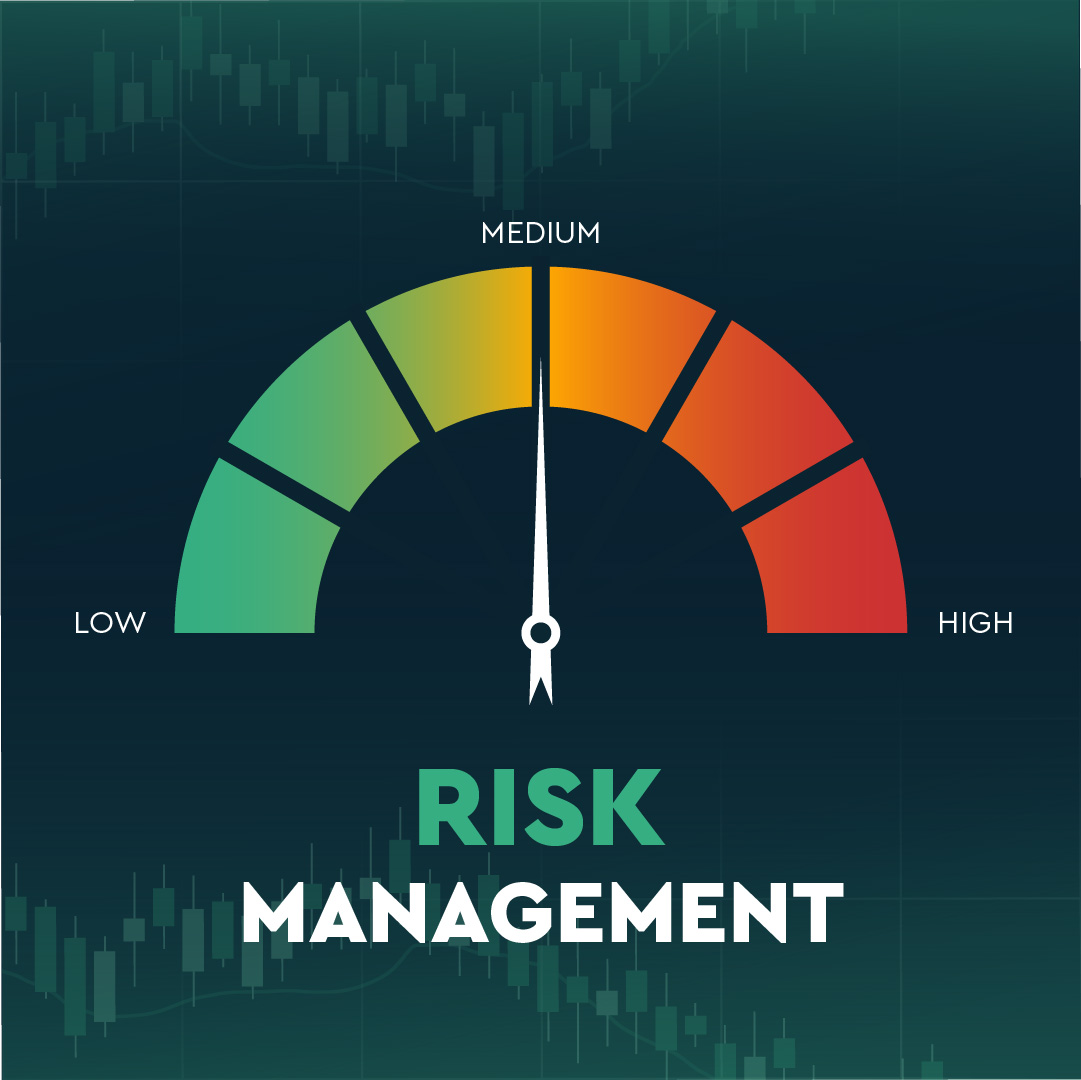How can I trade indices?
Trading indexes requires careful planning and a disciplined approach. Here are some general guidelines on how indexes can be traded:
- Develop a Trading Plan: Having a well-defined trading plan is essential. It should include clear objectives, risk management strategies, entry and exit rules, and a plan for monitoring and evaluating trades. A trading plan helps traders stay focused, disciplined, and consistent in their trading approach.
- Choose the Right Instrument: There are various ways to trade indexes, including using futures contracts, options, exchange-traded funds (ETFs), or contracts for difference (CFDs), among others. Each instrument has its own unique features and risks, and traders should choose the one that best aligns with their trading style, risk tolerance, and investment goals.
- Use Technical and Fundamental Analysis: Technical and fundamental analysis can help traders identify potential trading opportunities. Technical analysis involves studying price charts and technical indicators to identify patterns or trends, while fundamental analysis involves analyzing economic, financial, and market data to assess the underlying fundamentals of an index or its constituent stocks.
- Practice Risk Management: Risk management is crucial in index trading. Traders should use stop-loss orders to limit potential losses, manage position sizing to control risk exposure, and diversify their trading portfolio to spread risk. It’s important to not risk more than you can afford to lose on any single trade.
- Stay Informed: Keep yourself updated with the latest market developments, news, and announcements that may impact the performance of the index you are trading. Stay informed about economic releases, corporate earnings, geopolitical events, and other factors that may affect market sentiment and index movements.
- Test and Refine Your Strategy: It’s important to test and refine your trading strategy over time. Keep a trading journal to record your trades, review your performance, and identify areas for improvement. Make adjustments to your trading plan as needed based on your trading results and experiences.
- Practice Discipline and Emotional Control: Successful index trading requires discipline and emotional control. Avoid impulsive trading decisions based on emotions, such as fear or greed, and stick to your trading plan. Don’t chase losses or deviate from your risk management rules.
- Seek Professional Advice: If you are new to index trading or not confident in your trading skills, consider seeking professional advice from a qualified financial advisor or mentor to help you navigate the complexities of index trading.
Remember that index trading involves risks, and there is no guarantee of profits. Traders should carefully assess their risk tolerance, financial goals, and trading experience before engaging in index trading, and continuously monitor and manage risks throughout their trading journey.
How much should I risk per trade?
The amount to risk per trade on indexes depends on various factors, including your risk tolerance, trading strategy, account size, and overall financial situation. There is no one-size-fits-all answer, as risk management should be tailored to individual circumstances. However, here are some general guidelines to consider when determining how much to risk per trade on indexes:
- Risk Tolerance: Your risk tolerance refers to your ability and willingness to tolerate losses. It is important to assess your risk tolerance honestly and realistically. If you are risk-averse and prefer to preserve capital, you may opt for a lower risk per trade. On the other hand, if you are more risk-tolerant and can handle larger losses, you may consider a higher risk per trade.
- Trading Strategy: Your trading strategy should also play a role in determining your risk per trade. Different trading strategies have different risk profiles. For example, a day trader may employ tighter stop-loss levels and smaller position sizes, while a swing trader may use wider stop-loss levels and larger position sizes. Your trading strategy should align with your risk tolerance and account for potential losses.
- Account Size: The size of your trading account is another important factor. Risking a larger percentage of your account per trade can result in higher potential gains, but also higher potential losses. It is generally recommended to risk a small percentage of your account per trade, typically 1-2% of your total account balance, although some traders may choose to risk up to 3-5% per trade. It’s important to strike a balance between potential returns and risk management based on your account size.
- Overall Financial Situation: Your overall financial situation, including your income, expenses, and other financial goals, should also be considered when determining how much to risk per trade. It’s important to ensure that the amount you risk per trade is not jeopardizing your financial stability or affecting your ability to meet other financial obligations.
- Risk-Reward Ratio: Consider the risk-reward ratio of your trades. A higher risk-reward ratio means that you are potentially risking less for a higher potential reward. A favorable risk-reward ratio can allow for a higher risk per trade, as long as it is within your overall risk management plan.
Remember that risk management is crucial in trading, and it’s important to be disciplined and stick to your risk management plan consistently. Never risk more than you can afford to lose, and continuously monitor and adjust your risk per trade based on your trading results, risk tolerance, and overall financial situation. It’s always a good idea to consult with a qualified financial professional to determine an appropriate risk per trade that aligns with your individual circumstances.


Are they volatile?
Indices can exhibit varying levels of volatility depending on market conditions, economic factors, and other influences. Some indices can be relatively stable and experience lower levels of volatility, while others can be more volatile with larger and more frequent price swings. Here are some key points to consider regarding the volatility of indices:
- Index Composition: The volatility of an index can be influenced by the composition of the underlying stocks or assets. Indices that include large-cap, stable, and well-established companies from different sectors tend to exhibit lower volatility compared to indices that comprise smaller-cap stocks or more volatile sectors.
- Market Conditions: Volatility in indices is often influenced by prevailing market conditions. During periods of stability and positive market sentiment, indices may experience lower volatility. Conversely, during times of economic uncertainty, geopolitical tensions, or market turmoil, indices can become more volatile as investor sentiment and expectations fluctuate.
- Economic Events: Economic events, such as the release of important economic data, interest rate decisions, or policy changes, can impact index volatility. Unexpected or significant economic announcements can lead to increased volatility as market participants reassess their positions and adjust their strategies accordingly.
- Geopolitical Factors: Geopolitical events, including political unrest, trade disputes, or major policy changes, can introduce volatility into the market. Uncertainty arising from such events can trigger shifts in investor sentiment and result in increased price fluctuations in indices.
- Market Sentiment: Investor sentiment plays a significant role in index volatility. Positive or negative news, market trends, and shifts in sentiment can lead to changes in buying and selling pressure, affecting index prices. Investor reactions to earnings reports, economic forecasts, or geopolitical developments can contribute to short-term volatility.
- Market Liquidity: The liquidity of the underlying assets and the market for the index can also impact volatility. Highly liquid indices with deep and active markets tend to experience smoother price movements and lower volatility compared to less liquid indices.

What cause volatility on indexes?
There are several factors that can cause volatility in stock market indexes, such as:
- Market Sentiment: Market sentiment refers to the overall mood or sentiment of market participants, including investors, traders, and institutions. If there is a sudden change in market sentiment, such as widespread optimism or pessimism, it can lead to increased buying or selling pressure, resulting in index volatility.
- Economic News and Data: Economic news and data, such as GDP reports, employment data, and inflation numbers, can impact market sentiment and influence index volatility. Positive economic news may lead to higher expectations for corporate earnings, which can drive stock prices higher and result in index gains. Conversely, negative economic news can create uncertainty and lead to selling pressure, resulting in index declines.
- Corporate Earnings Reports: Corporate earnings reports, which provide information on a company’s financial performance, can significantly impact stock prices and, consequently, index performance. If a company’s earnings report exceeds or falls short of market expectations, it can lead to buying or selling pressure, respectively, and result in index volatility.
- Geopolitical Events: Geopolitical events, such as political instability, trade disputes, or international conflicts, can create uncertainty in the markets and impact index performance. Investors may react to geopolitical events by adjusting their investment strategies, which can result in increased buying or selling activity, leading to index volatility.
- Changes in Interest Rates: Changes in interest rates, set by central banks, can impact borrowing costs for companies, consumer spending, and overall economic conditions. If there are unexpected changes in interest rates, it can impact market sentiment and result in index volatility.
- Market Structure and Trading Activity: Market structure, including factors such as trading volumes, liquidity, and the use of high-frequency trading algorithms, can impact index volatility. Sudden changes in trading activity, such as a spike in trading volumes or a decrease in liquidity, can result in increased price volatility and impact index performance.
- Global Events and Natural Disasters: Global events, such as natural disasters, geopolitical tensions, or pandemics, can have a significant impact on markets and result in index volatility. These events can disrupt economic activity, impact supply chains, and create uncertainty, which can lead to increased selling or buying pressure in the markets.
It’s important to note that index volatility is a complex phenomenon that can result from a combination of various factors, and it can be influenced by market participants’ perception of these factors. Market participants’ emotions, expectations, and behavior can also impact index volatility, as human psychology plays a significant role in financial markets.

